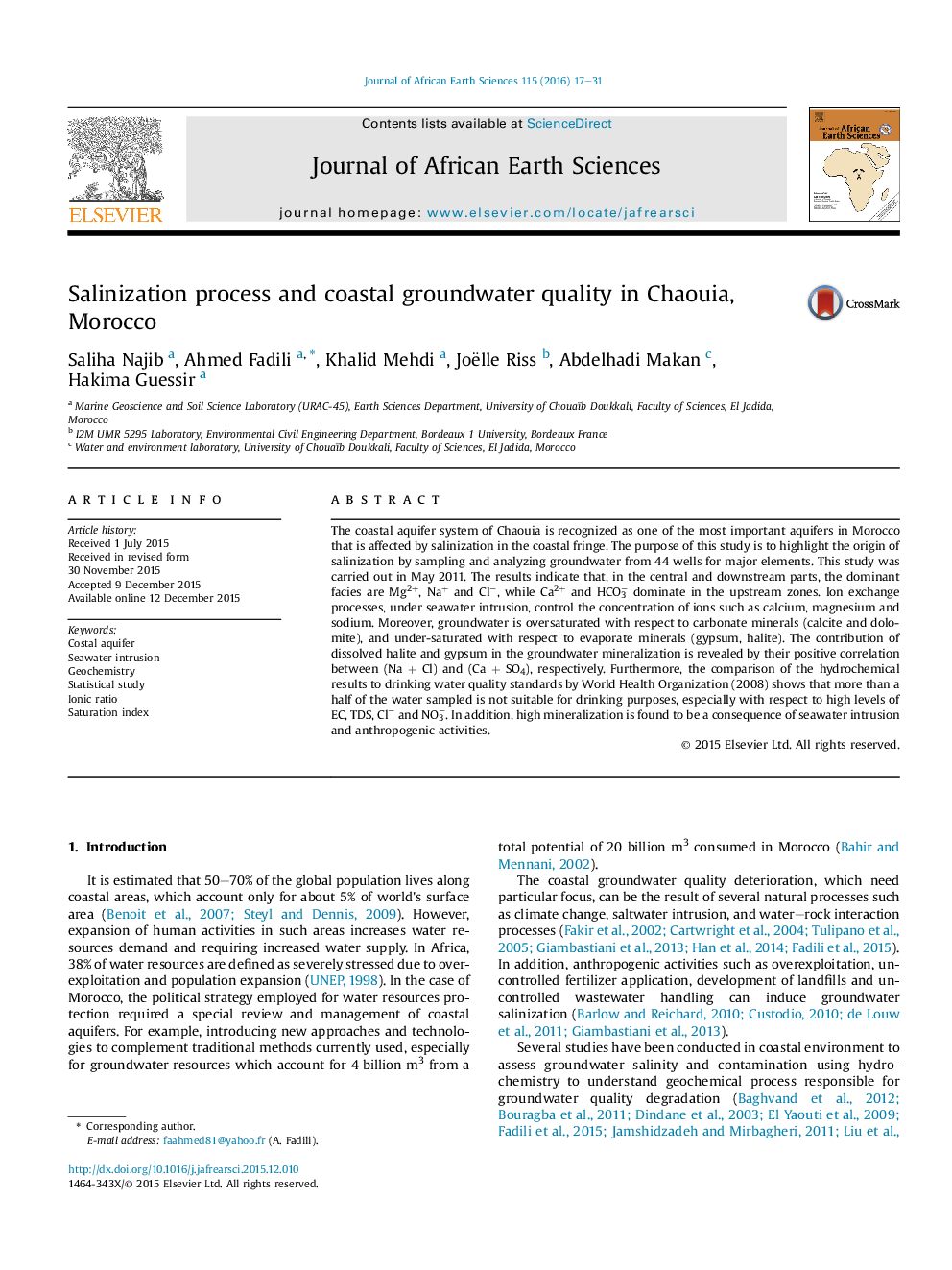| Article ID | Journal | Published Year | Pages | File Type |
|---|---|---|---|---|
| 4728397 | Journal of African Earth Sciences | 2016 | 15 Pages |
•Samples were taken from 44 wells during May 2011 period.•This study aims to investigate origin and process of groundwater mineralization.•Distance from coast and anthropogenic activities emphasized mineralization.•Groundwater salinity was due to seawater intrusion in areas at 2 km from ocean.•Cation exchange, evaporation and evaporate dissolution induce groundwater salinity.
The coastal aquifer system of Chaouia is recognized as one of the most important aquifers in Morocco that is affected by salinization in the coastal fringe. The purpose of this study is to highlight the origin of salinization by sampling and analyzing groundwater from 44 wells for major elements. This study was carried out in May 2011. The results indicate that, in the central and downstream parts, the dominant facies are Mg2+, Na+ and Cl−, while Ca2+ and HCO3− dominate in the upstream zones. Ion exchange processes, under seawater intrusion, control the concentration of ions such as calcium, magnesium and sodium. Moreover, groundwater is oversaturated with respect to carbonate minerals (calcite and dolomite), and under-saturated with respect to evaporate minerals (gypsum, halite). The contribution of dissolved halite and gypsum in the groundwater mineralization is revealed by their positive correlation between (Na + Cl) and (Ca + SO4), respectively. Furthermore, the comparison of the hydrochemical results to drinking water quality standards by World Health Organization (2008) shows that more than a half of the water sampled is not suitable for drinking purposes, especially with respect to high levels of EC, TDS, Cl− and NO3−. In addition, high mineralization is found to be a consequence of seawater intrusion and anthropogenic activities.
